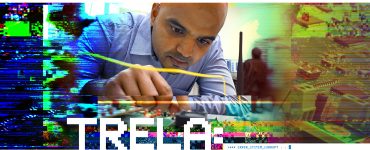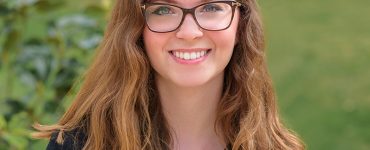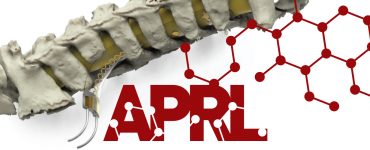Building Bridges and Breakthroughs
How a New Space Creates Synergy for Researchers and Students
THE NEW BIOENGINEERING AND SCIENCES BUILDING (BSB) was built to inspire: five levels fully loaded with advanced equipment to conduct high impact research; a view of the Dallas skyline; a grand stairwell entrance; natural lighting that even fills the basement; and a scenic skywalk that connects to the Natural Science and Engineering Research Laboratory, a facility full of groundbreaking, interdisciplinary research in its own right.
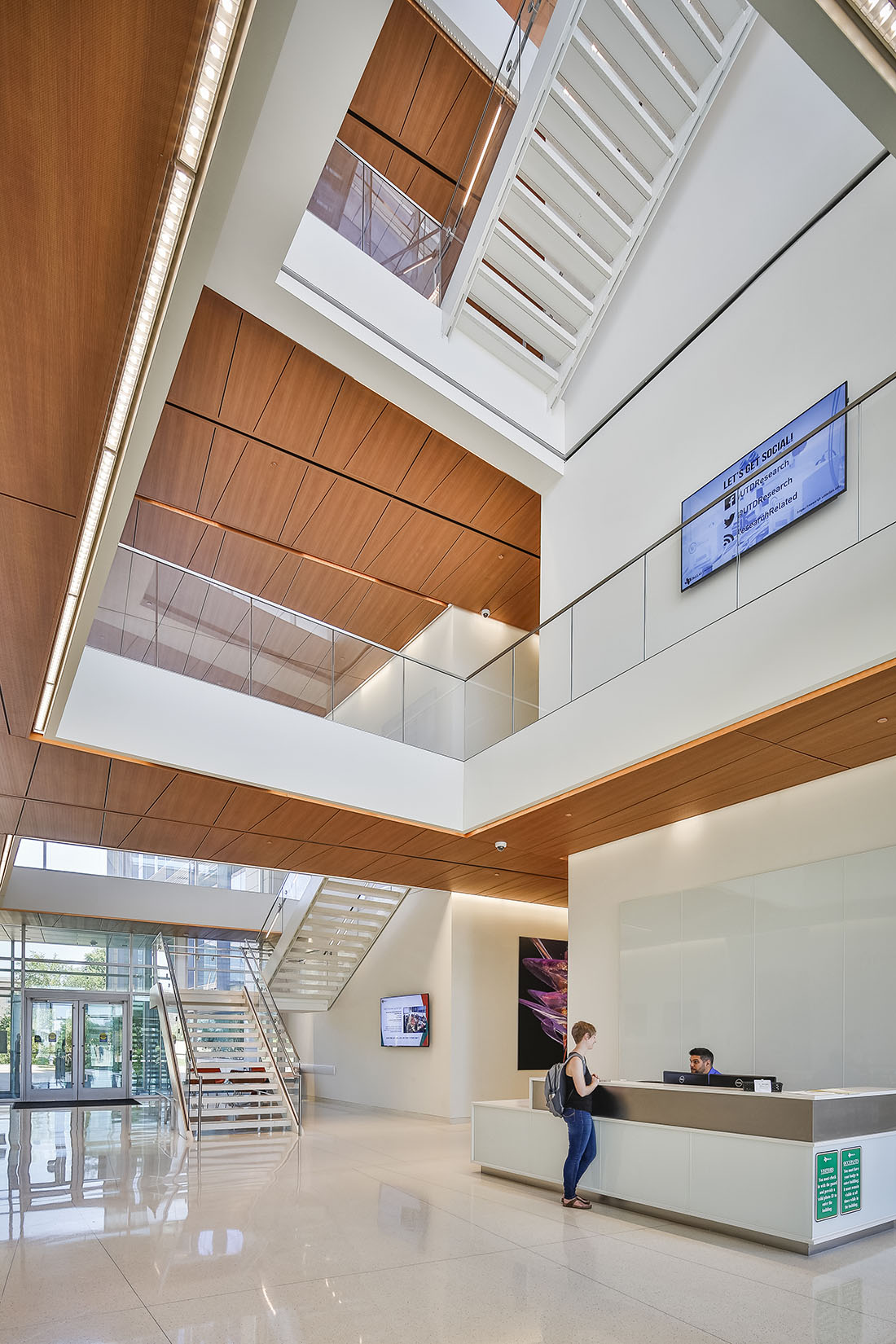
Inside the walls of the four-story, 220,000-square-foot structure known as BSB, a culture of collaboration creates an active, vibrant community that motivates talented researchers and students to excel.
“You can drive up on a Sunday morning and you’ll find 30 plus cars in the parking lot,” said Dr. Joseph Pancrazio, an associate provost at UT Dallas and professor of bioengineering in the Jonsson School.
Dedicated last year, the building houses the Department of Bioengineering, Department of Biological Sciences, Department of Chemistry and Biochemistry, as well as the Neuroscience program and Texas Biomedical Device Center. Created six years ago, the fast-growing Department of Bioengineering now has about 600 undergraduate students and more than 100 graduate students. Research is an expectation even at the undergraduate level, with students being able to earn up to six academic credits for time in the lab. Twenty new research and 10 teaching faculty members have been hired, and millions of dollars have been invested in research and lab equipment, such as the $113 million BSB, to ensure that students get a high quality and useful education. The Jonsson School research program is focused on the areas of bioimaging; biomaterials; biomechanics; biosensors and bioelectronics; neural engineering; and systems biology.
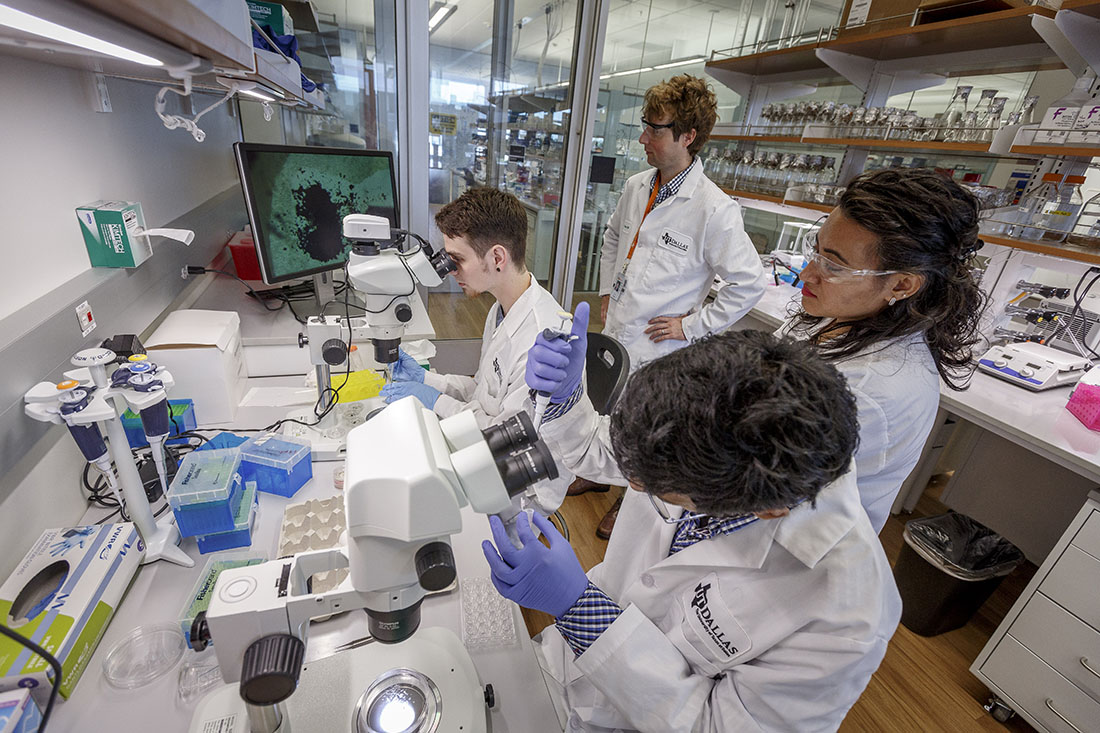
The biomechanics lab of Dr. Victor Varner (backrow, right) includes undergraduate student John Jackson (backrow, left) and doctoral students Lokesh Patil (front, left) and Somdutta Chakrakborty (front, right).
The program prepares students for medical or graduate school, entrepreneurship or industry positions needing engineers capable of making medical devices. Many of the faculty members have joint appointments with UT Southwestern Medical Center and professionals from the hundreds of high-tech, startup and biomedical companies nearby also give program input, said Dr. Robert Rennaker, head of the Department of Bioengineering and holder of the Texas Instruments Distinguished Chair in Bioengineering.
“Some engineers have a tendency to build a hammer and go find a nail,” said Rennaker, who is also director of the Texas Biomedical Device Center at UT Dallas. “We have the clinicians working with us so that we are engineering solutions to specific problems. This trains the students to think deeply about issues – not only the technical problems, but also the practical implications: ‘How do I build a device that will operate in a surgical suite? How do I build a device that the patients can take home? These are questions that you just don’t think about if you don’t have the right partners.”
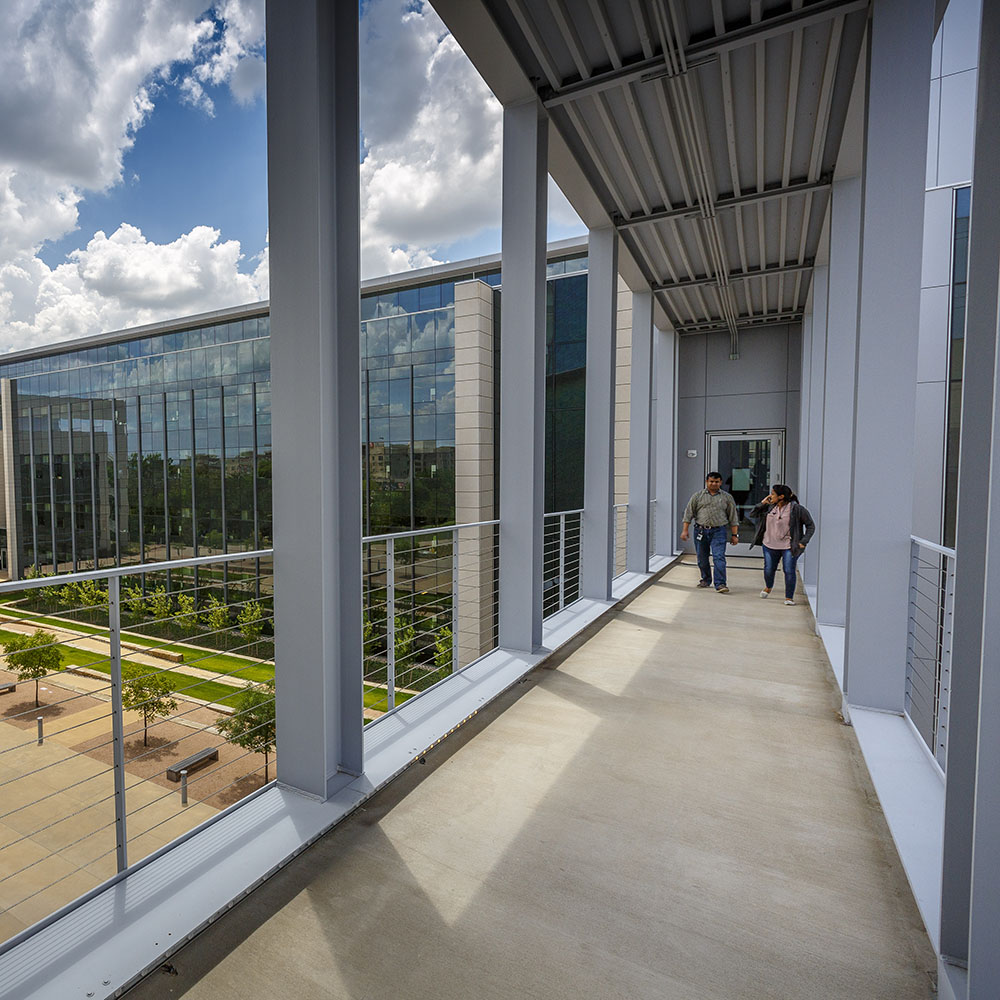
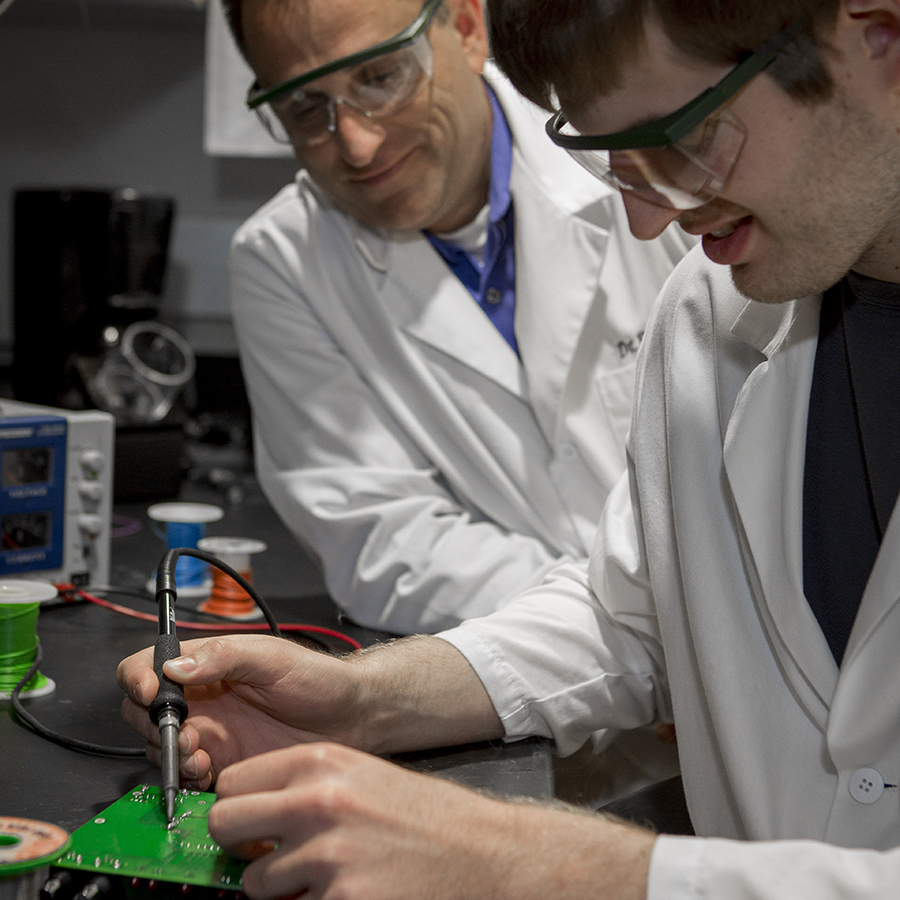
While partnerships with outside organizations ensure relevance of the research being conducted inside the building, BSB was designed to facilitate research collaborations between different disciplines, and within the six bioengineering clusters that the Jonsson School is building.
“The students run this whole place. That is what makes it vibrant; faculty members steer a little bit, but it is a student/trainee environment.”
“The difficult problems we are solving require experts in different areas working together to make significant breakthroughs,” said Dr. Alexandra Joshi-Imre, a research professor involved with multiple labs in the building.
For example, researchers with complementary interests are positioned nearby or on the same floor; all offices in the building are the same size and located near their lab for easy access for students; kitchen areas are only in common spaces at the ends of the buildings; most labs have at least one glass wall so passersby can see what research is being conducted, with some labs not having any walls between them; and once a person passes the main entrances on each floor, the labs have no locks.
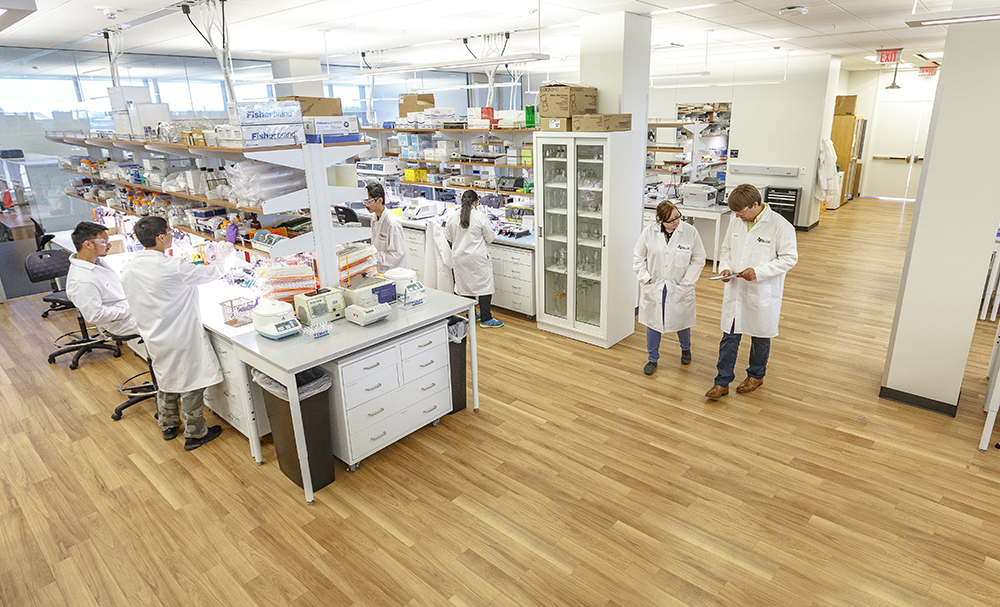
Shared Lab: Dr. Taylor Ware (right), speaks with Julia Burroughs, an undergraduate biomedical engineering student, in a lab area used by four professors, with no walls separating their spaces.
“Locks are about keeping people out, and UT Dallas is very good at welcoming people in by eliminating perceived barriers and boundaries between research groups,” Pancrazio said.
Joshi-Imre, who completed a postdoctoral position in materials science and engineering at UT Dallas, said that the Jonsson School attracts the types of students who are driven by intellectual curiosity to broach other labs: it is not uncommon for a graduate student in one lab to dream about an experiment, and then come in the next day and work with students in another lab to run the experiment, she said.
“We think about space in BSB as though all the labs are our playground,” she said. “It is understood that the professors have to endorse the idea.”


Pancrazio agrees that students, after they are adequately and properly trained, are then treated as respected and trusted colleagues.
“The students run this whole place,” he said. “That is what makes it vibrant; faculty members steer a little bit, but it is a student/trainee environment.
“We have young, vibrant faculty who are all research active. They know that in order for them to do big science, they need to be collaborative. They also recognize that having students moving in and around labs is a way to nucleate new ideas and create new collaborations.”
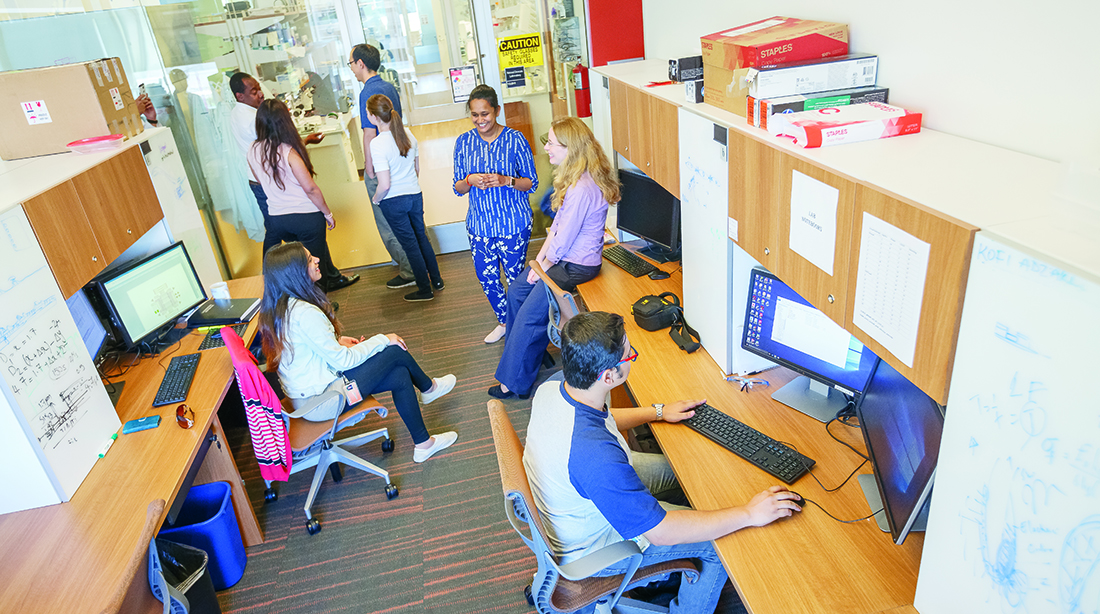
The larger community extends from the lab members housed inside BSB to the adjoining clean room and facilities inside NSERL, the aforementioned building that houses other UT Dallas engineers, materials scientists, physicists, chemists and microbiologists. That $85 million facility rivals museums in aesthetics and leading universities and industry labs in research equipment capabilities, and has also helped recruit and retain faculty members from some of the best universities and research institutes in the world.
“BSB and the research culture has everything needed to get done what students and researchers need to get done, and do things that they did not even plan on doing when they arrived that morning,” Pancrazio said.
Even if that morning falls on a Sunday.
Explore “Collaborations” to discover some research breakthroughs in the making inside BSB.



